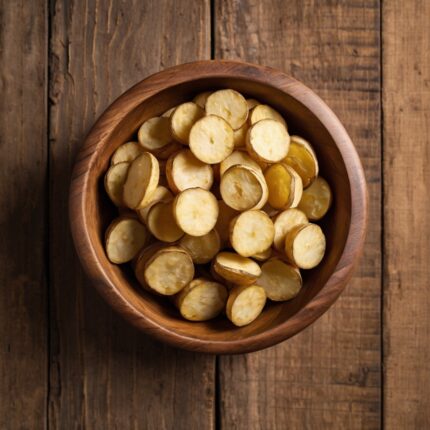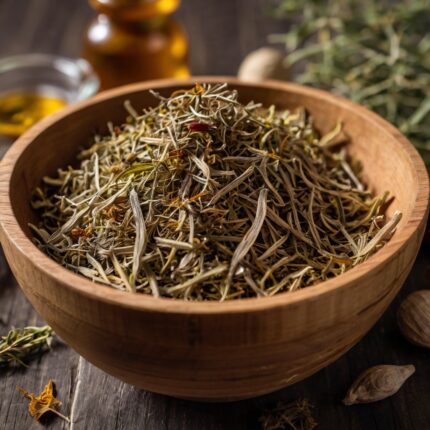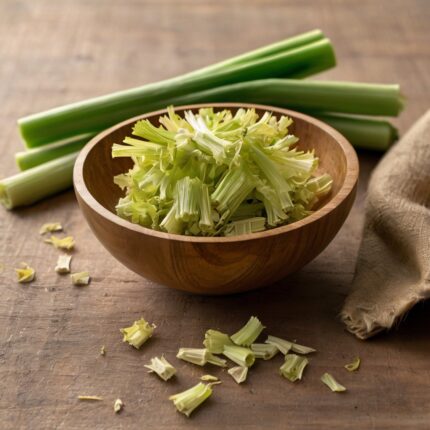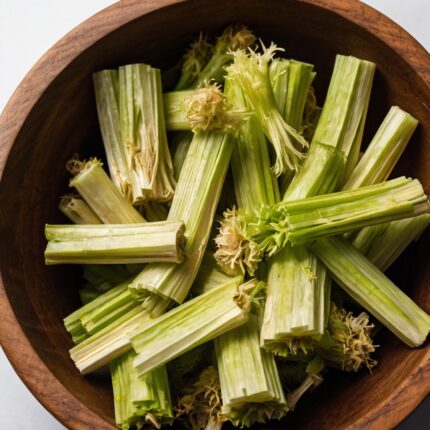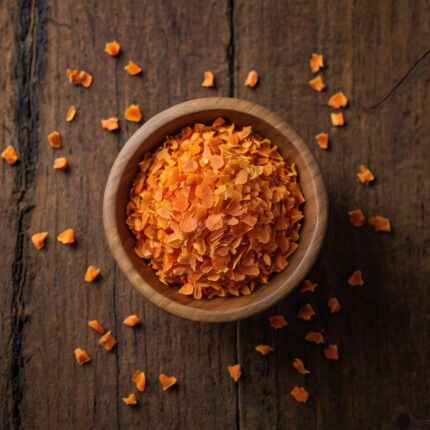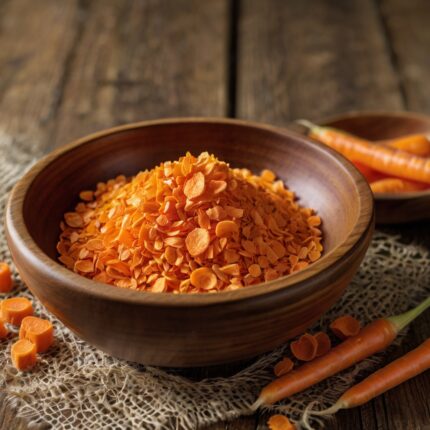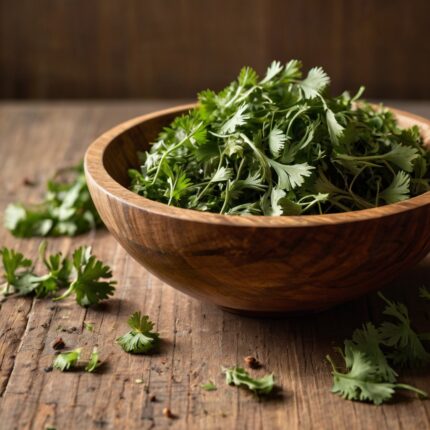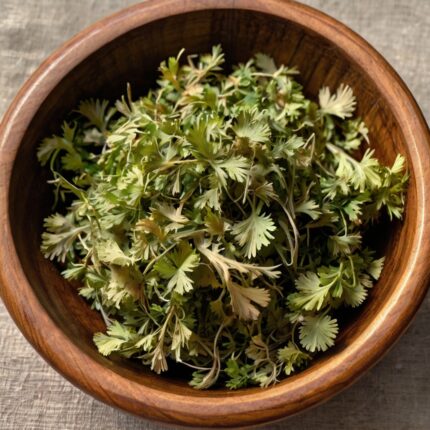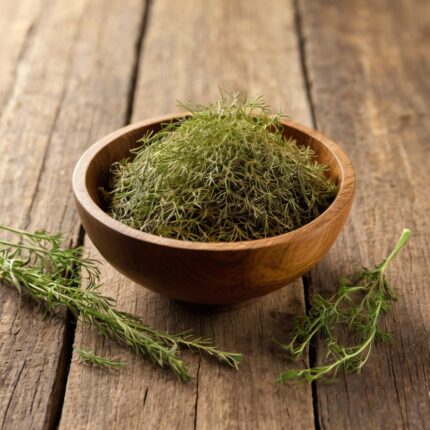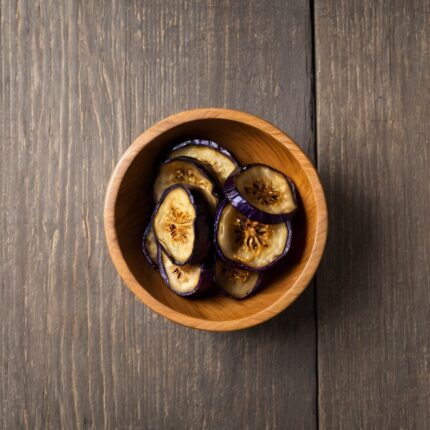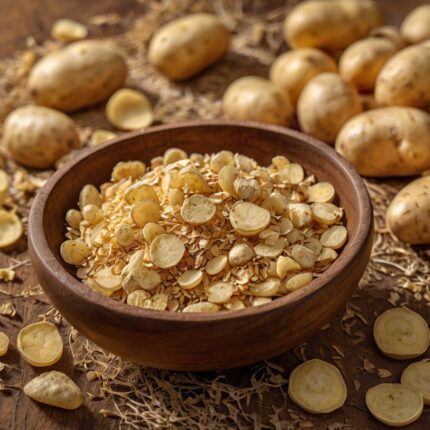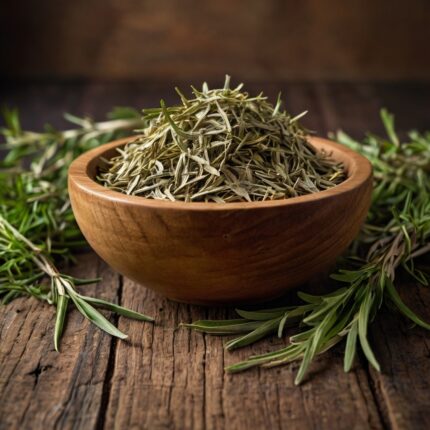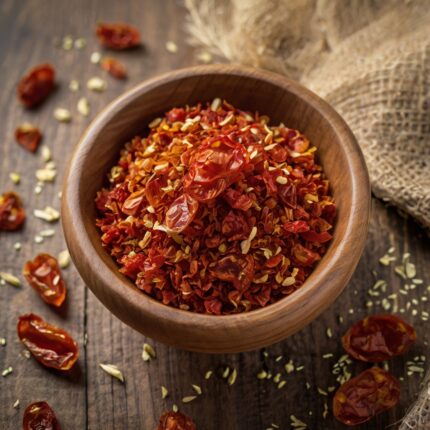Dried pumpkin can be used in various ways as a versatile base ingredient or snack. We will explore this further below:
Types of dried pumpkin:
- Slices or chips: Thinly sliced pumpkin, often seasoned and dried, used as a snack.
- Powder: Dried pumpkin that has been ground into a powder and is used in baking, soups, or smoothies.
- Cubes: Small pieces of pumpkin that are dried and used for cooking or as snacks.
Uses:
- Cooking: Rehydrate for use in soups, stews, or casseroles.
- Baking: Add pumpkin powder to bread, muffins, or pancakes to enhance flavor and nutrients.
- Snacks: Consume as chips or use in trail mixes.
- Pet food: Healthy snacks for dogs that aid digestion.
Methods for drying pumpkin at home:
-
Using a food dehydrator:
- Slice the pumpkin thinly.
- Place them on the dehydrator trays.
- Dry at 57°C (135°F) for 8 to 12 hours.
-
Oven method:
- Bake the slices at the lowest temperature for 6 to 8 hours, turning them occasionally.
-
Dried pumpkin as a base ingredient:
Dried pumpkin can be used as a versatile base ingredient in various industries. Below are some of its applications:
-
Food industry:
- Powder production: Dried pumpkin can be ground into a fine powder and used as a natural flavoring or coloring agent in soups, sauces, baby foods, and baking.
- Snack products: It can be turned into chips or seeds for healthy snacks or used in granola bars and trail mixes.
- Base ingredient for instant foods: Dried pumpkin can be rehydrated for use in instant soups, ready-to-cook meals, and mashed potato-like products.
-
Animal feed:
- Food additive: Due to its richness in vitamins, minerals, and fiber, dried pumpkin is used in livestock and pet food formulations to enhance nutritional value.
-
Pharmaceutical and dietary supplement industries:
- Nutrient-rich: Dried pumpkin is a source of beta-carotene, antioxidants, and dietary fiber, making it suitable for supplements or functional foods.
-
Cosmetics industry:
- Natural skincare products: The antioxidants and vitamins in dried pumpkin make it useful for producing masks, scrubs, and skincare creams.
-
Textile and packaging industries:
- Bioplastics: Dried pumpkin can be used to extract starch, which serves as an eco-friendly raw material for bioplastics and biodegradable packaging.
-
Fermentation industries:
- Ethanol production: As a starch-rich material, dried pumpkin can be used for bioethanol production.
- Probiotics and enzymes: It can be used as a fermentation medium for the production of beneficial microbes and enzymes.
-
Agricultural applications:
- Compost and fertilizer: The leftover materials from dried pumpkin can be turned into organic fertilizer or compost to enrich the soil.
-
Handmade applications:
- Handmade materials: Ground dried pumpkin can be used to produce pigments or natural dyes for artistic projects and creating art pieces.
Benefits of using dried pumpkin:
- Long shelf life due to reduced moisture.
- Retention of nutrients and flavor, making it a cost-effective raw material.
- Ease of transportation and storage.
-
| Nutritional | value per 100 grams of dried pumpkin: |
| Calories: | 343kcal |
| protain | 11.3g |
| Carbohydrates: | 65.2 grams |
| Sugar: | 15–20 grams (depending on the drying method) |
| Fiber: | 10–15grams |
| fat | 1.5g |
| Saturated fat: | 0.2g |
| Vitamin A (as beta-carotene): | ~10,000–15,000 International Units (IU) |
| Vitamin C: | ~5–10 milligrams |
| Vitamin E: | ~2 milligrams |
| Potassium: | ~1,600 milligrams |
| Magnesium: | ~90milligrams |
| Calcium: | ~90 milligrams |
| Iron: | ~3.5 milligrams |
| Zinc: | ~2milligrams |
| Phosphorus: | ~230 milligrams |

